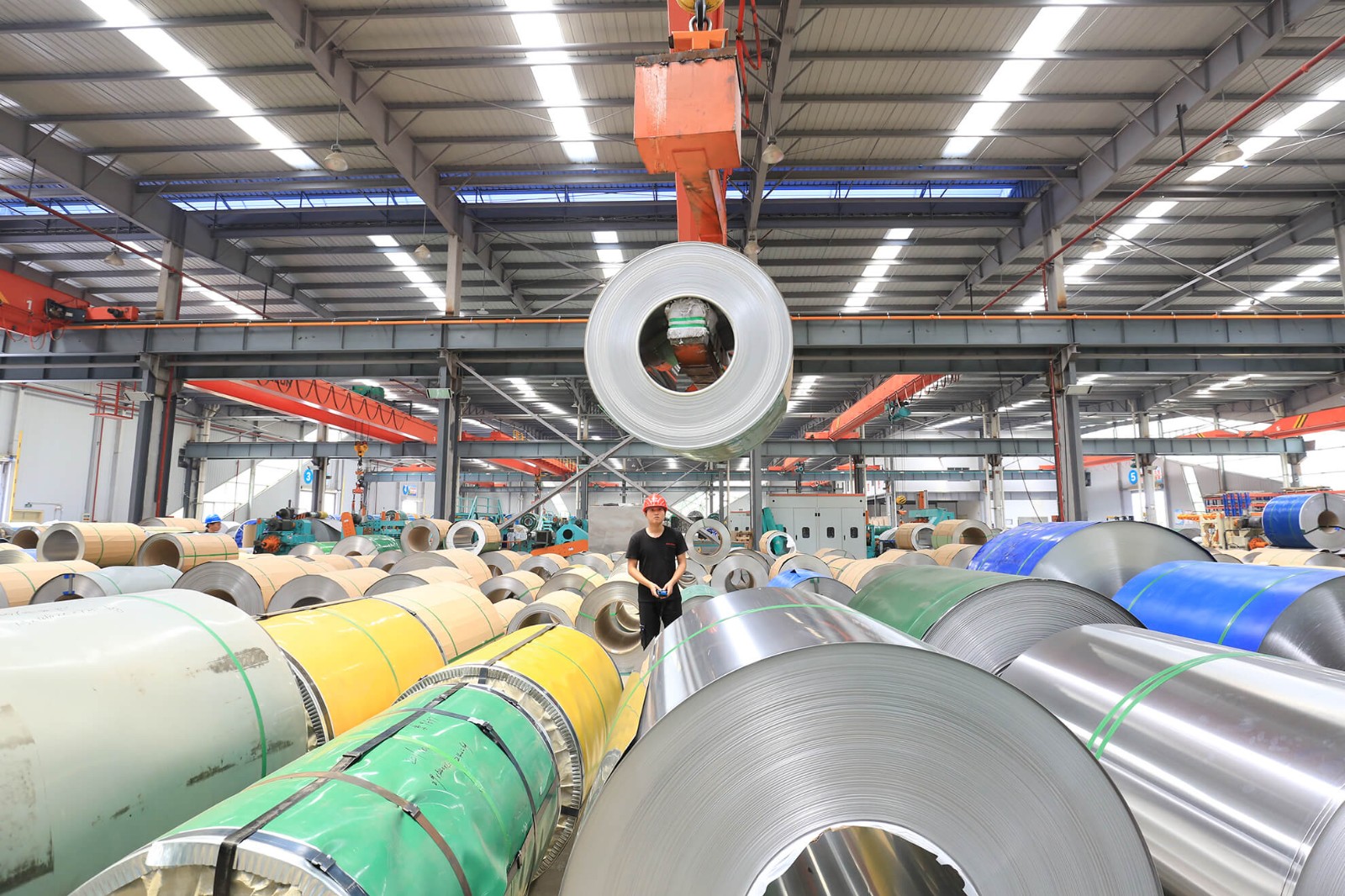
400 series stainless steels are alloys of iron, carbon and chromium. Because it does not contain nickel, it is a nickel-saving stainless steel, also known as stainless steel. 400 series stainless steels are normally magnetic due to their martensitic structure and the presence of iron. 400 series stainless steel has strong resistance to high temperature oxidation, and its physical and mechanical properties are further improved compared with carbon steel. Most 400 series stainless steels can be heat treated. At present, 400 series stainless steel is widely used in automobile exhaust, elevators, washing machine inner tubes, kitchenware, home appliances, medical equipment, water heaters, roof panels, curtain walls and power plant equipment and other industries.
Cold-rolled stainless steel coils are processed through low-temperature cold rolling process and have good surface quality and processing performance. 400 series stainless steel coils mainly include:
1. Ferritic stainless steel (US ASTM grade): 405, 430, 430F, 434;
2. Martensitic stainless steel (US ASTM grade): 403, 405, 410, 416, 420, 431, 440A, 440B.
400 series stainless steel coils are relatively cheap and are generally used for civilian products. Generally, it should be selected under hot chlorination environment. It can partially replace 300 series austenitic stainless steel in civil and industrial fields such as kitchenware, home appliances, decoration, automobile exhaust systems, and petrochemical industries.
400 series stainless steel has the following characteristics:
1) Good oxidation resistance: 400 series stainless steel contains high hardness chromium, which can effectively resist corrosion and oxidation.
2) Excellent stress corrosion resistance: 400 series stainless steel can maintain relatively stable performance under high temperature, high pressure and other environments, and has good stress corrosion resistance.
3) Large thermal conductivity and small expansion coefficient: The product material has good thermal conductivity and expansion, and is not easy to deform during use.
4) Wide application: 400 series stainless steel is widely used in environmental protection industries such as water industry, seawater desalination, industrial waste gas, garbage and sewage treatment.
The wide range of applications of 400 series stainless steel are as follows:
1) Water storage, transportation, delivery, regeneration, seawater desalination and other fields.
2) Environmental protection industry: industrial waste gas, garbage and sewage treatment plants are made of stainless steel, especially in large cities and coastal cities, the amount of stainless steel used may even exceed that of European and American countries. Such as stainless steel flagpoles, street guardrails, overpass signs, trash cans, residences and traffic command booths, etc.
3) Manufacturing: 400 series stainless steel is mainly used to manufacture parts resistant to atmospheric, water vapor, water and oxidative acid corrosion.
Performance and applications of various common types of 400 series stainless steel.
409H stainless steel has good processing and welding performance, and its high-temperature oxidation resistance is also good. It can withstand the temperature range from room temperature to 575°, and it is mostly used as an automobile exhaust system. 409L stainless steel controls the carbon and nitrogen content in stainless steel on this basis, so the weldability, formability and corrosion resistance are relatively better; it is mainly used in automobile exhaust pipes, heat exchangers, containers, etc. after welding without heat treatment products.
410 stainless steel is a representative type of martensitic stainless steel. The material has high strength and high hardness, but its corrosion resistance is poor, so it is not suitable for use in severe corrosion environments; the material has low carbon content, good processing performance, and can harden the surface after heat treatment. 410L is based on 410 stainless steel with reduced carbon content. It has excellent processability, resistance to welding deformation, and high temperature oxidation resistance. It is mainly used for mechanical structural parts, engine exhaust pipes, boiler combustion chambers and combustion chambers. device
420J1 stainless steel has high hardness after quenching and good corrosion resistance. It is mostly used in tableware (knives) and turbine blades. 420J2 is a representative steel type of martensitic stainless steel. Its strength and hardness are higher, but its corrosion resistance is poor, its formability is poor, and its wear resistance is relatively good. It can be heat treated to improve its mechanical properties. After quenching, the hardness is higher than that of 420J1 steel. Widely used in processing cutting tools, nozzles, valves, board rulers and tableware.
430 stainless steel is a representative steel type of ferritic stainless steel. The material has low thermal expansion rate and good formability and oxidation resistance. It is suitable for making heat-resistant appliances, burners, home appliances, tableware and kitchen sinks. 430 stainless steel is cheap and has good processing performance. It is an ideal substitute for 304 stainless steel.
400 series stainless steel is a widely used material, and its classification and characteristics have been fully applied in different fields. Ferritic stainless steel and martensitic stainless steel each have special properties and can be selected according to different needs. With the development of refining technology outside the furnace, the development prospect of ferritic stainless steel is very optimistic.







|

|

|

|

|
| Timely Info | Independent | Platform | Multiple guarantees | Self-operated storage |
| About us | Channel | Useful tools |
|---|---|---|
| About China Steel Market | Prices | Steel weight calculation |
| Contact us | Answers | |
| Terms & Conditions | Inventory | |
| Privacy Policy | Help |
Hot search words: